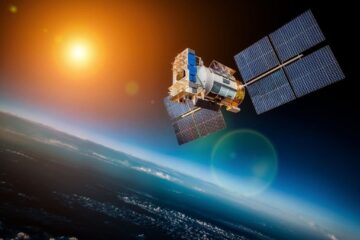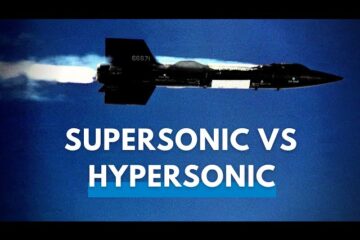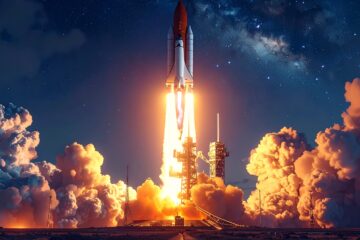
For decades, the idea of using fusion propulsion to power spacecraft has lived primarily in the realm of science fiction. Popularized in movies like Star Trek and Interstellar, fusion-powered spacecraft promise near-light-speed travel, drastically shorter journey times, and the potential to open up the solar system—and beyond—to human exploration.
But in 2025, this once-fantastical concept is inching closer to scientific plausibility. In this blog post, we’ll explore what fusion rocket propulsion is, how it works, the major challenges standing in its way, and whether it’s truly the future of space travel—or just a high-concept dream.
🚀 What Is Fusion Rocket Propulsion?
Fusion rocket propulsion is a form of spacecraft propulsion that uses nuclear fusion reactions—the same process that powers the sun—to generate thrust.
In a fusion reaction, light atomic nuclei (typically isotopes of hydrogen like deuterium and tritium) combine under extreme heat and pressure to form a heavier nucleus, releasing vast amounts of energy in the process.
Why It’s Game-Changing:
- High energy density: Fusion produces far more energy than chemical rockets.
- High specific impulse (ISP): ISP is a measure of fuel efficiency—fusion rockets could theoretically achieve values 10x higher than traditional propulsion systems.
- Fast interplanetary travel: Travel time to Mars could be cut from months to mere weeks.
SEO Tip: Target keywords like fusion propulsion spacecraft, how fusion rockets work, and next-generation rocket engines.
🧪 How Fusion Rockets Would Work
Fusion rockets could be based on several theoretical designs. Here are the two most discussed:
1. Magneto-Inertial Confinement (MIC)
This method uses powerful magnetic fields and laser pulses to compress plasma (a superheated gas of charged particles) and trigger fusion reactions. The resulting burst of energy is directed out of the rocket’s nozzle to generate thrust.
2. Direct Fusion Drive (DFD)
Developed by Princeton Plasma Physics Laboratory (PPPL), this concept uses a fusion reaction chamber where plasma is magnetically confined. It simultaneously generates thrust and electricity—ideal for both propulsion and onboard systems.
Fun Fact: The DFD is one of the few fusion propulsion systems in active development and could potentially send missions to Jupiter’s moons in under two years.
🛠️ Key Challenges to Fusion Propulsion
Despite its incredible promise, fusion rocket propulsion is still not operational. There are several hurdles:
1. Achieving Net Energy Gain
Creating a controlled fusion reaction that produces more energy than it consumes (known as “ignition”) is the holy grail of fusion research. While labs like NIF (National Ignition Facility) and ITER have made strides, a space-worthy reactor must be compact and efficient.
2. Plasma Containment
Fusion requires temperatures of millions of degrees Celsius. Containing this hot plasma without letting it touch the reactor walls is a significant challenge. Magnetic confinement using tokamaks or stellarators is being researched, but scaling them down for a spacecraft remains difficult.
3. Fuel Limitations
Tritium, a key fusion fuel, is rare and radioactive. While deuterium is abundant (found in seawater), tritium must be bred or produced—posing both technical and regulatory challenges.
4. Radiation Shielding
Fusion reactions produce high-energy neutrons that can damage spacecraft materials and pose risks to crew members. Adequate shielding adds weight, reducing efficiency.
🔬 Current Progress & Research Efforts
Several organizations are working on fusion propulsion, including:
🚀 NASA
NASA has funded concepts like Pulsed Fusion Drives and partners with private companies developing fusion tech for space applications.
⚡ Helicity Space
A private firm founded by former NASA engineers, Helicity is exploring fusion propulsion using compact and scalable designs.
🧪 Princeton Satellite Systems (DFD)
Their Direct Fusion Drive is arguably the most promising concept. It uses a small fusion reactor that could be ready for deep space missions in the 2030s.
🔥 General Fusion, Tokamak Energy, and TAE Technologies
While not focused exclusively on rockets, these companies are developing compact fusion systems that could eventually be adapted for propulsion.
🌌 Future Missions and Potential Use Cases
Fusion propulsion isn’t just for interstellar fantasy. It could radically transform real-world missions:
- Mars in 30 days: Fusion could reduce travel time from 6–9 months to just 30–45 days.
- Jupiter and Saturn missions: Current missions take 6–8 years. Fusion could slash this to under 2.
- Interstellar probes: Fusion could one day power missions to Alpha Centauri or Proxima b—our closest neighboring stars.
🤖 Fusion vs. Other Advanced Propulsion Systems
| Propulsion Type | Specific Impulse (ISP) | Speed Potential | Tech Readiness |
|---|---|---|---|
| Chemical (e.g., Falcon 9) | ~350 sec | Low | Operational |
| Ion Propulsion | ~3,000 sec | Medium | Operational |
| Nuclear Thermal | ~900 sec | Medium | Testing (2020s) |
| Fusion Propulsion | >10,000 sec | High | In Development |
🧭 Conclusion: Is Fusion Rocket Propulsion the Future?
Fusion propulsion remains one of the most promising yet elusive technologies in the space exploration toolkit. The science is theoretically sound. The engineering is progressing. And the global interest—driven by both public and private entities—is growing rapidly.
While a fully operational fusion rocket is unlikely before the 2030s or 2040s, the building blocks are falling into place. So, while it may still sound like science fiction today, fusion-powered space travel is steadily becoming a future reality.
🔍 SEO Summary:
Primary Keywords: fusion rocket propulsion, how fusion rockets work, fusion spacecraft
Secondary Keywords: direct fusion drive, interplanetary propulsion, future space engines
Meta Description: Is fusion rocket propulsion science fiction or the future of space travel? Discover how fusion could revolutionize space exploration in this in-depth blog.



0 Comments